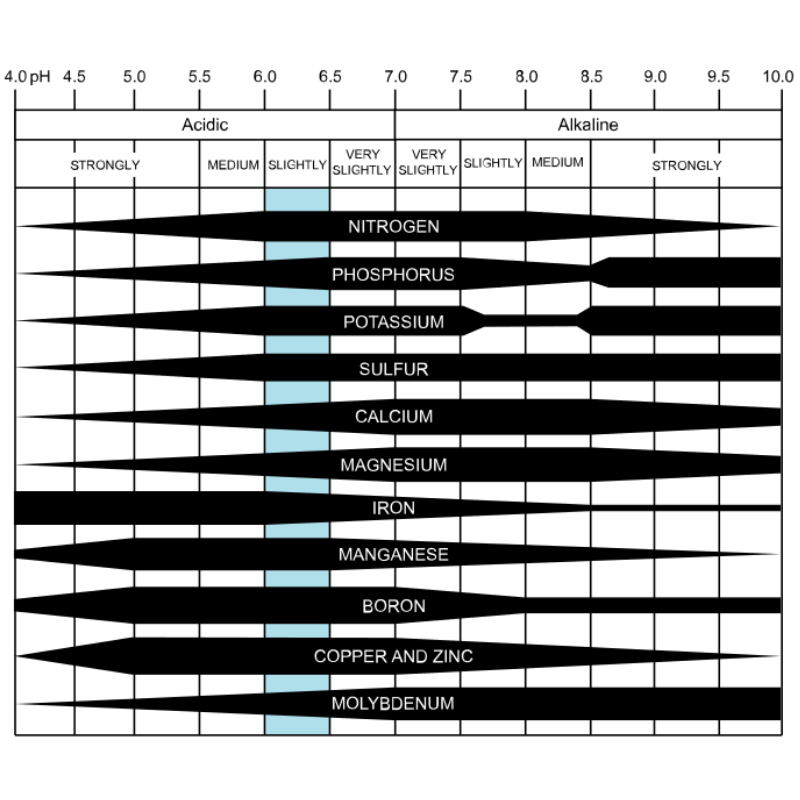The Importance of pH and Choosing the Right Fertiliser

Shoots, Roots, Fruits – NPK. Say it out loud... and repeat. This is your gardening mantra to successfully feeding your plants!
If you have ever grown huge tomato vines with very few fruit, or planted flowers and ended up with plain green bushes then this mantra may just help you master your garden!
There are three main nutrients your plants need to grow and fruit, they are Nitrogen (N), Phosphorus (P) and Potassium (K). Your plants will need different ratios of these nutrients based on what you are wanting them to do. For example if you want vegetation growth (shoots) then you need Nitrogen as this promotes leaf growth. If you’re wanting to fuel root growth, then Phosphorus is what you’re after. Lastly, to promote good fruit, vegetable and flower growth you will need Potassium.
In theory, soil should contain all of the nutrients your plants need to thrive but in reality differences in pH, soil type and previous use of the soil cause deficiencies, this is where fertiliser comes in handy.
Packaged fertilisers outline their NPK ration on the pack… but making sense of what’s best for your needs can be difficult.
Let’s take a look at a general purpose liquid fertiliser: 12 : 1.4 : 7. This means there is 12% Nitrogen (N), 1.4% Phosphorus (P) and 7% Potassium (K), a total of 20.4% in the mix, the remainder of the solution is most lilkely made up of trace elements and other beneficial soil conditioning elements. Don’t be fooled into thinking bigger numbers mean a better fertiliser though, when it comes to fertiliser, there is such a thing as too much of a good thing! Pumping nitrogen into your soil may result in plants growing leggy and weak rather than standard sized and strong.
Soil pH
Adding nutrients to the soil can’t be done in isolation, your soil pH plays a role in how nutrients can be utilised by your plants. Here’s a table displaying the availability of the key nutrients by pH. The thicker the bar the more available the nutrient is at that pH. A soil pH of between 6 and 7.5 is optimal for most plants to thrive. However there are always exceptions, so be sure to check what your specific plant variety prefers. Before adding anything to your soil we suggest testing your pH so you know what you're working with.
A note on Australian Natives
Australia natives for the most part prefer well draining acidic soils and don't like fertilisers high in Phosphorus. We recommend a specific native fertiliser for natives.

In Summary:
N = Nitrogen = Shoots (Vegetation, Leaves)
P = Phosphorus = Roots
K = Potassium = Fruits (Fruit, Vegetables & Flowers)
Know your soil pH before you add anything to the soil.
Know what pH and nutrients your specific plant varieties prefer so you can select an appropriate fertiliser.
Your local Garden Centre should be able to assist you with selecting an appropriate fertiliser for your specific needs.


